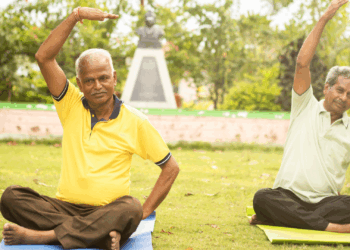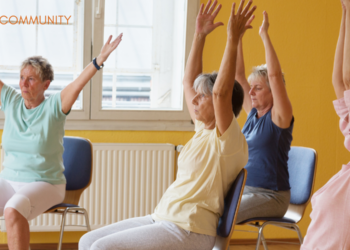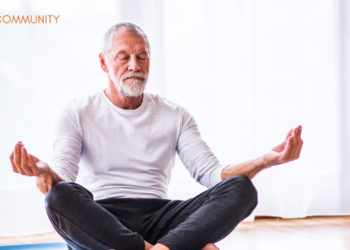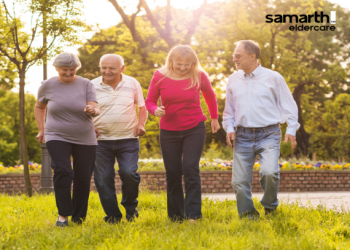Pranayama is a simple and hugely popular ancient Indian Yoga practice. Prana is the vital energy we require to live, and this life force nourishes our mind to keep the body alive. Prana means life force, and Ayama means to regulate, extend, or expand it – referred to as Pranayama. Simply put, Pranayama means control of breath done in different variations. We can control the timing, duration, and frequency of every breath.
We find references to Pranayama in the early Indian scriptures. According to Patanjali’s Yoga Sutras, Pranayama is a preparatory practice required before you adopt more advanced yogic techniques. You can do Pranayama in various ways, whatever is convenient for you. Ideally, the posture should be meditative. However, Pranayama can be done in any way convenient to the person, sitting on a chair or even lying on the bed. The methodology of postures and how to do Pranayama are available online. A lot of videos are available for beginners. Or, one can join a Yoga class -offline or online – to get into the discipline of practicing Pranayama daily.
Why Pranayama?

Join Now >
Life, as we know it today, can cause a lot of stagnation. This energy (Prana) gets blocked or weakened, so we experience fatigue, lethargy, lack of purpose, etc. All of us go through this stage. However, less active seniors feel these issues more pronounced. Therefore, doing Pranayama is therapeutic to help them relax and relieve the symptoms. This yogic practice of Pranayama helps control or move the energy back to our body.
Also, many degenerative changes take place in our bodies as we age. It is not possible to reverse this natural process. However, practices like Pranayama can help us age gracefully and stay healthy. The beauty of Pranayama lies in the fact that it is not stringent and offers modified options for seniors to pick techniques according to their age and health conditions. Kapalbhati, Anulom/Vinulom, Brahmari, etc., are Pranayama variations.
How does it help?
Whenever we encounter verbal acrimony, it upsets us. When we get upset, we either sulk, cry or become morose. Don’t we all get upset and unhappy in family situations when our spouse or an adult child says hurtful things? Even watching news channels or checking our social media feeds can upset us. Our social media posts or forwards can rub someone up the wrong way. They may comment or pick a fight.
These are daily occurrences we cannot evade unless we cut off socialising. Hence, we must build resilience to control our emotions. Pranayama is a great way to calm us down and become resilient.
We regain our Prana by deliberately controlling our breath to extend and expand the vital force energy. Regulating our breath steadies the mind and provides physiological benefits such as increased heart rate, better oxygen saturation, calming the mind, and balancing the nervous system. Some studies have even found it beneficial for health conditions such as osteoporosis and arthritis, found commonly among seniors. Also, regular practice showed significant improvement in the psychological profiles of seniors.
The Pranayama stages
The four discernible stages of Pranayama are:
- Puraka (inhalation)
- Antara Kumbhaka (the mindful pause after inhalation)
- Rechaka(exhalation)
- Bahya Kumbhaka (the mindful pause after exhalation)
These are the basics of simple Pranayama – inhale -pause-exhale-pause.
How to go about it?
- Find a quiet and peaceful corner and let your mind relax a bit.
- Sit comfortably by picking a position that suits you best to do Pranayama.
- Reflect a few minutes on yourself and relax.
- Now spend five to fifteen minutes doing Pranayama, which is breathing in, holding your breath, and breathing out.
Here are a few suggestions to get going:
- Make a short exhalation and then start inhaling – slowly and rhythmically. When inhalation starts, focus on the abdominal region (maybe gently place a palm on your stomach). This step is the initial phase.
- One can gradually move into the chest part.
- Remember – no jerks, exaggerated abdominal movements, or ballooning the stomach.
- Be conscious of the time taken for inhalation, and exhale completely and smoothly without retaining the breath. Then breathe normally.
- Start your practice daily by doing five rounds and then slowly increase. Similarly, pause counts (for holding your breath) can range between 5 to 10 seconds.
In conclusion
The practice of Pranayama involves breathing exercises, patterns, and stages. Hence, you follow a systematic and purposeful inhalation and exhalation pattern and hold your breath in a specific sequence. It extends and empowers the Prana. It also revitalises and soothes vital energy so the body can harness it.
As long as Prana, the life energy, flows in our body, we are alive and energetic. Therefore, we must regulate our breath by practicing Pranayama to live life fully. After all, it is not in adding years to life, but in adding life to years.
Takeaway: Regulation of your breath will calm you. Do Pranayama daily.











